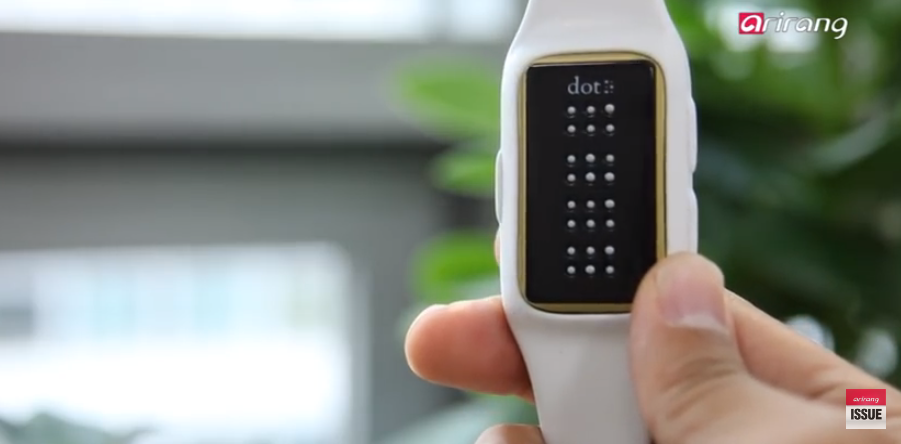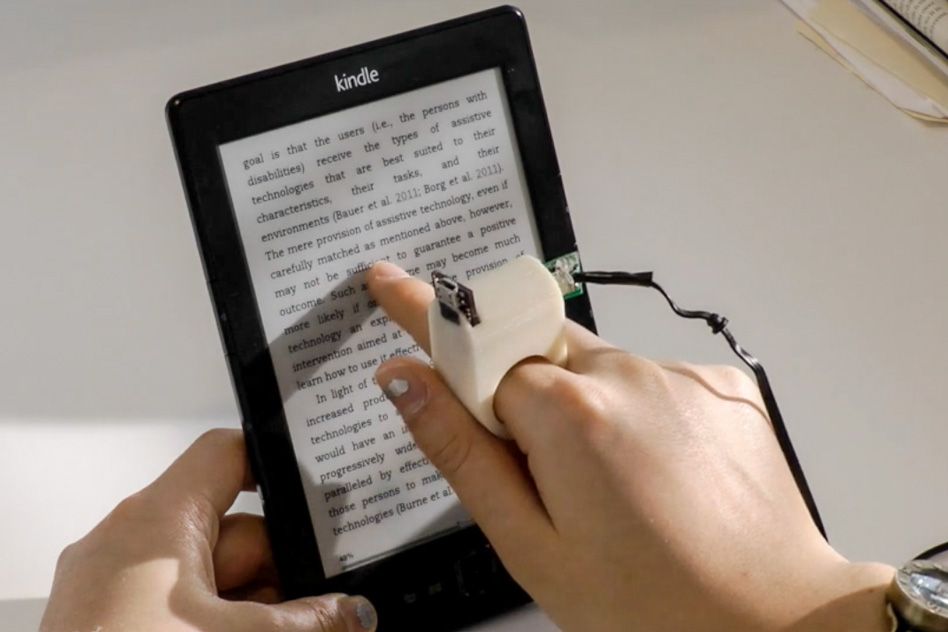Braille Displays and Notetakers: Must-Have Tools for Learning and Work
Braille Displays and Notetakers: Must-Have Tools for Learning and Work
Blog Article
Discover Ingenious Tools Designed for the Aesthetically Damaged
The growth of ingenious devices for the visually damaged represents a substantial development in ease of access and independence. Technologies such as smart glasses with AI capabilities and mobile applications developed to offer acoustic descriptions are improving everyday experiences for customers.
Smart Glasses for Navigation

Smart glasses made for navigating are changing the means aesthetically impaired individuals interact with their setting. These advanced tools make use of a combination of video camera technology, synthetic knowledge, and acoustic feedback to provide real-time information about environments. By using obstacle detection systems, smart glasses can signal users to possible dangers, enabling more secure movement in both unfamiliar and familiar setups.
The assimilation of GPS technology even more boosts navigating capacities, enabling customers to receive acoustic directions as they relocate. This hands-free strategy not only promotes independence however likewise empowers visually impaired people to navigate city landscapes with boosted confidence. Furthermore, several wise glasses are outfitted with features that recognize landmarks and road signs, giving contextual information that enhances the individual experience.
In addition, the development of these devices is continually advancing, with companies working to boost the precision of object recognition and broaden the array of navigational functions. As wise glasses end up being a lot more obtainable and budget friendly, they hold the possible to significantly transform every day life for aesthetically impaired users. Eventually, these ingenious devices represent a critical step towards inclusivity, offering improved flexibility and a higher sense of freedom for individuals navigating the globe around them.

Mobile Application for Daily Living
How can mobile applications improve the every day lives of aesthetically impaired individuals? Mobile apps are reinventing the way aesthetically damaged users navigate their settings, handle day-to-day jobs, and access details. These applications offer essential assistance via various capabilities, cultivating freedom and enhancing top quality of life.
Numerous ingenious mobile applications are created especially for daily living. For example, applications like Be My Eyes connect visually damaged individuals with sighted volunteers through video telephone calls, enabling them to obtain real-time support with jobs such as reading tags or navigating strange spaces. Seeing AI, established by Microsoft, utilizes man-made knowledge to describe environments, reviewed text, and recognize objects, efficiently changing a smart device right into an effective tool for everyday assistance.
Furthermore, navigating applications customized for the visually damaged, such as Aira and BlindSquare, supply audio-based directions and ecological info, making it possible for customers to traverse their environments securely and confidently. Past navigating and immediate help, mobile applications also support company and job monitoring, with attributes that help customers set reminders, develop to-do lists, and track consultations. In recap, mobile applications work as important sources, encouraging aesthetically impaired people to lead more independent and fulfilling lives.
Wearable Technologies for Assistance
Empowerment via modern technology is increasingly obvious in the realm of wearable tools developed to help visually impaired people. These ingenious devices integrate perfectly right into every day life, enhancing navigating and providing vital feedback to individuals. Clever glasses geared up with video cameras can identify faces and check out text aloud, enabling users to engage even more with confidence in social and expert setups.
An additional remarkable advancement is using haptic responses systems in wearable gadgets. These systems utilize vibrations or various other responsive signals to convey info concerning the individual's environment, such as barriers or changes in terrain, enhancing flexibility and safety and security. Wearable innovations also include wristbands that connect to smartphones, notifying users to alerts through subtle vibrations, hence improving connectivity without dependence on aesthetic signs.
As these modern technologies proceed to advance, they are not only enhancing self-reliance for visually impaired people but likewise promoting a better feeling of incorporation in society. By connecting the void between challenges dealt with in everyday living and the capacity for freedom, wearable innovations serve as critical tools in the quest for equality and empowerment for those with aesthetic disabilities.
Audio Description Devices
Sound summary devices play a critical role in boosting access for visually damaged people, supplying them with the capability to engage with aesthetic media. Smart glasses for the visually impaired. These tools offer narrated descriptions of essential visual aspects in movies, tv shows, and live performances, ensuring that customers can completely understand the context and emotions conveyed through visuals
Sound summary can be integrated right into numerous platforms, including streaming services, cinema screenings, and live theater. Many preferred streaming solutions currently consist of audio summary as an look at this web-site ease of access function, permitting audiences to pick it easily. In addition to mainstream media, specialized applications additionally exist, giving audio descriptions for art events, galleries, and various other social events.
The performance of audio description depends upon the skill of the narrators, that must communicate visual details succinctly without diminishing the initial audio. Developments in this field are likewise leading the means for more tailored experiences, where customers can readjust the level of detail and pacing according to their choices.
Braille Innovations and Instruments
Braille devices and innovations have substantially changed the way aesthetically impaired people communicate with message and details. Modern developments have actually brought about the development of flexible tools that improve proficiency and independence among customers. Especially, Braille display modern technologies have advanced, permitting dynamic reading experiences. These tools transform electronic message right into Braille, allowing users to access a substantial variety of information on smartphones, computer systems, and tablets.
Furthermore, portable Braille notetakers combine traditional Braille input with modern functionalities, promoting note-taking, find more information scheduling, and file modifying on the go. Speech-to-text devices for low vision. These portable gadgets often feature text-to-speech capacities, connecting the space in between Braille and auditory details
In enhancement, cutting-edge Braille printers have actually emerged, enabling individuals to generate Braille tags, files, and educational materials efficiently. This availability fosters better engagement in professional and educational atmospheres, inevitably advertising inclusivity.
In addition, research into clever Braille innovations continues to increase. Instruments that include man-made intelligence are being explored to offer real-time navigation support and contextual details, boosting the individual experience in diverse settings. Overall, these developments mirror a dedication to equipping visually impaired individuals through technology, guaranteeing they can easily gain access to and engage with the globe around them.

Verdict
The development of innovative tools for the aesthetically impaired substantially boosts independence and quality of life. Smart glasses, mobile applications, wearable technologies, audio summary devices, and Braille advancements jointly empower people by supplying essential navigation assistance, ecological recognition, and enhanced analysis experiences. These technologies not just foster better inclusion however likewise advertise autonomy in day-to-day activities, ultimately adding More hints to an extra easily accessible and fair society for aesthetically impaired people. Continued advancement in this field holds guarantee for additional improvements.
As smart glasses become a lot more inexpensive and accessible, they hold the potential to substantially transform everyday life for visually damaged individuals. Mobile applications are changing the means aesthetically damaged customers navigate their settings, handle day-to-day tasks, and accessibility information. Applications like Be My Eyes link visually impaired individuals with sighted volunteers using video calls, enabling them to obtain real-time support with tasks such as checking out tags or browsing unfamiliar rooms.Furthermore, navigating applications customized for the visually impaired, such as Aira and BlindSquare, use audio-based directions and environmental details, allowing individuals to traverse their surroundings securely and with confidence.The development of ingenious devices for the aesthetically impaired significantly boosts self-reliance and quality of life.
Report this page